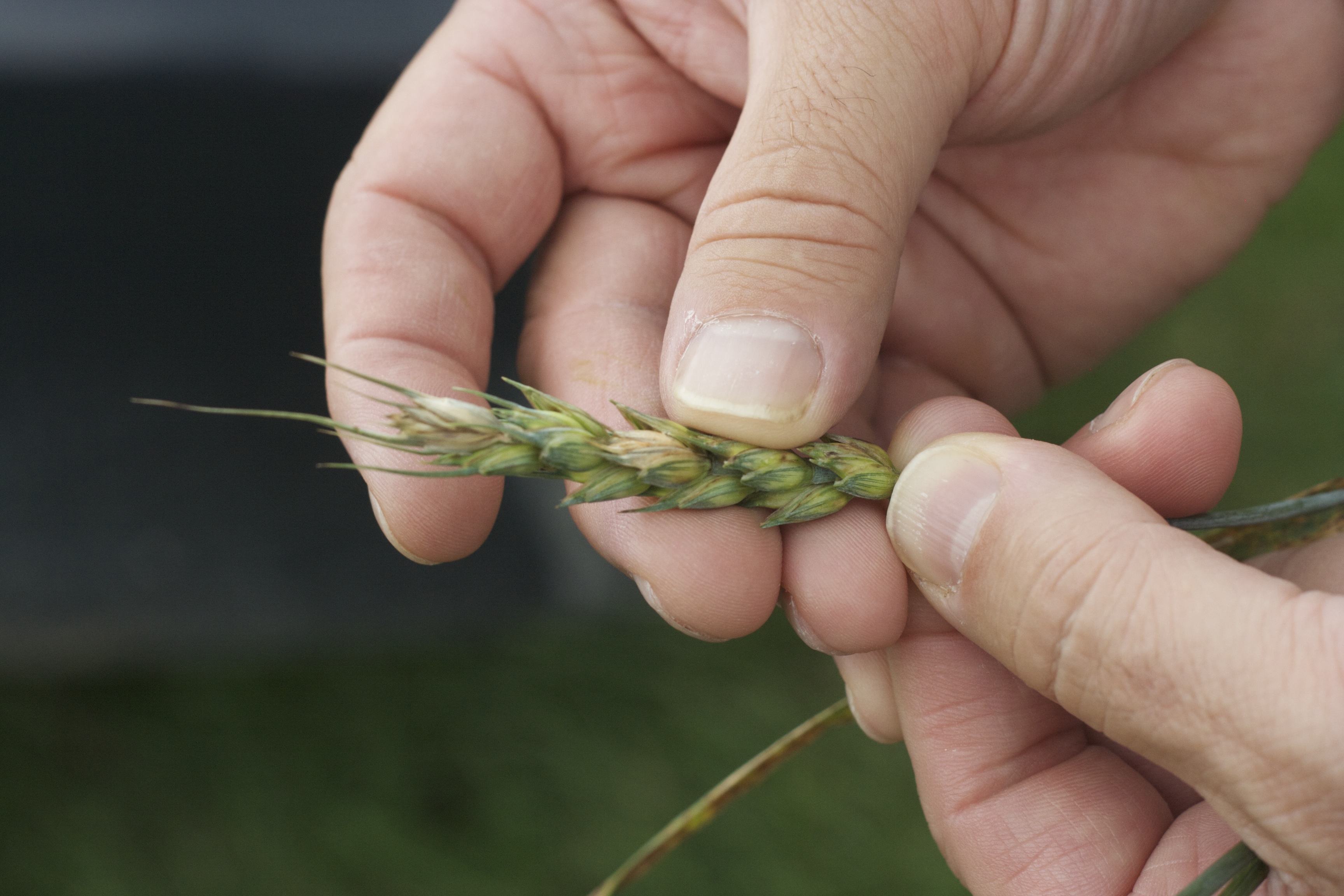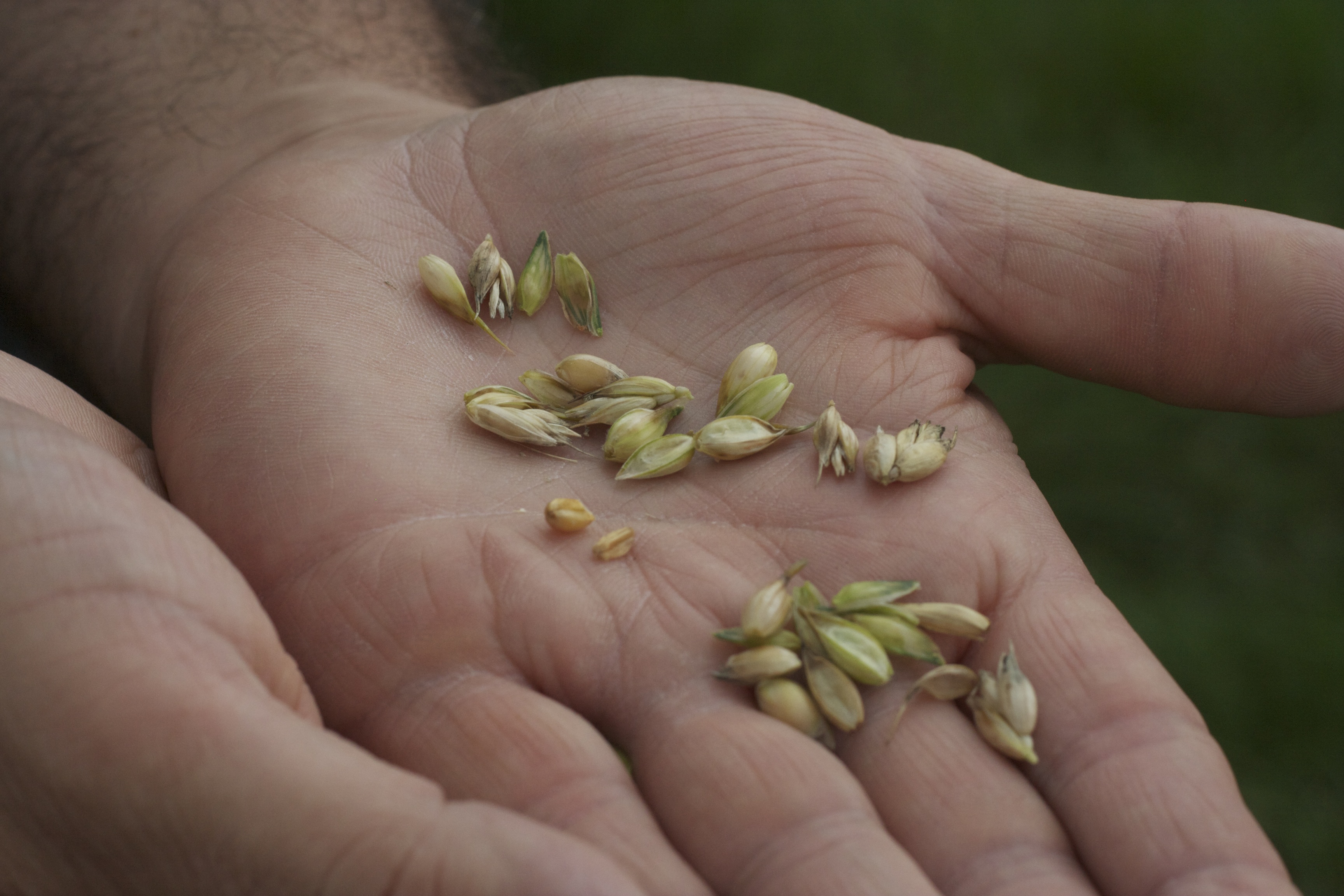Minimizing Fusarium
BEST MANAGEMENT PRACTICES FOR HARVEST AND STORAGE
Peter Johnson didn’t beat around the bush last week when he faced his first group of the day at FarmSmart Expo in Elora. “This is a Fusarium year,” he said, as his hands absentmindedly separated wheat from chaff to reveal the shrivelled kernels beneath. “The guys that did spray… They have a shot at making milling quality. The guys that did not… Well, I’m really, really concerned that there’s going to be some feed wheat come out of there. I hope I’m wrong, but you’ll see in these plots, it’s just not really pretty.”


While crops in Essex and Kent look reasonably clean, the balance of acres in Elgin, Middlesex, North Lambton, Huron, Perth, Waterloo, Wellington and Dufferin are showing high levels of Fusarium “Is there anything I can do at this point?” he asks, looking over the group. “You’re the agronomist now. Give me the best recommendations you can.”
HARVEST AND STORAGE TIPS FOR FUSARIUM-INFECTED WHEAT
To minimize Fusarium impact on crops the first thing growers need to do is a pre-harvest scout. Unfortunately, if there’s already Fusarium in your fields, there’s really nothing you can do to rescue your crop from it. Careful harvesting, drying and storing techniques can maximize grain quality, though.
The farmer who piped up was right. The first step to reducing Fusarium impact is to harvest early. “Anytime grain is over 19% moisture, fusarium can grow,” says Johnson, “so the quicker you can stop that potential spread, the better.” Harvest should begin as soon as your combine is able to thresh, but beware that if moisture levels are above 18%, some combines will have difficulty blowing out the lighter, damaged kernels.
By increasing the fan speed, kernels with initial Fusarium infection can be blown out the back of the combine, says Johnson. “But secondary spread, where it spreads from the small, initial kernels onto big, fully-developed kernels, you can’t blow those kernels out the back of the combine without blowing the whole crop out the back of the combine.”
“And consider adjusting the cleaning sieves to a more wide-open setting,” he continues. “This directs the air blast vertically, slowing the rearward movement of the grain mass and aiding cleaning and separation.” If the cleaning sieves are open, though, be careful to keep the wheat heads and straw pieces out of the grain sample.
To reduce the amount of material on the cleaning sieve, reduce your combine’s speed. Slower speeds also allow the good kernels more time to separate from the infected ones.
Finally, use heat to dry grain with moisture levels higher than 16%. Keep in mind, though, that the maximum recommended air temperature for drying milling wheat is 60°C with non-recirculating batch dryers, recirculating batch dryers and cross-flow dryers. With parallel-flow dryers, don’t go above 70°C. The maximum recommended air temperature for drying seed wheat is 40°C.
CROP INSURANCE QUESTIONS ANSWERED
Agricorp recognizes that Fusarium damage is a major concern for producers. Growers can be protected through Production Insurance and AgriStability.
Reports are already coming out of south western Ontario where wheat harvest is just beginning, says Chief Inspector and Senior Industry Specialist Jim Zavitz. They expect to receive more in the coming weeks as harvest continues.
“Production Insurance compensates growers for Fusarium losses by factoring down lower quality [Grade 3 and feed] wheat yields by 5% and 10% respectively,” says Zavitz. “If the factored yield falls below the guaranteed production, a claim will be paid.”
AgriStability also protects customers when their reference margin falls below 70% due to factors like lower market prices for feed grade wheat. Customers can apply or interim payments once they are six months into their fiscal year.
Production Insurance customers experiencing Fusarium damage should call Agricorp to file a damage report. “If you can walk in the field and see damage, give us a call,” says Zavitz. “We may not be able to visit every farmer, but at least we can track the extent of the damage.”
Agricorp continues to work closely with the Grain Farmers of Ontario and the Ontario Ministry of Agriculture and Food, and will continue to monitor crop and market conditions through harvest. •








